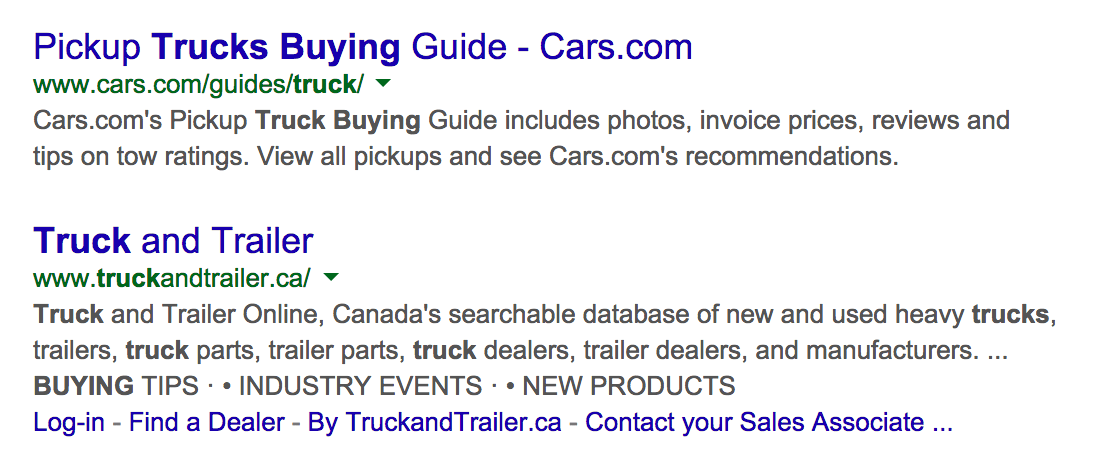Search engine optimization (SEO) is the process of optimizing domains or websites for search engines. SEO experts build authority to domain names and strategically use keywords on web page content to increase ranking positions on search engine results pages (SERPs). This article is meant as an introduction to the essentials of doing business online. You’ll learn what is SEO and how it works, including important tips about websites plus domain names.
Why Should You Care About SEO?
SEO is a sustainable low-cost marketing strategy for small, medium-sized, and large businesses. SEO is how you increase the search engine visibility of your website and attract visitors. The cost of SEO can be time or money, depending on whether you hire a digital marketing agency or go at it yourself.
Today the top digital marketing strategy used by marketers to attract qualified customers online is SEO. More than 5.5 billion searches are made every day on Google according to Internet Live Stats. Bing processes 12 billion searches per month according to Statista.
Then you have others like DuckDuckGo, a search engine that focuses on user privacy and processes about 50 million searches per day. Yahoo and other smaller search engines on the web also process significant searches daily. So there’s plenty of opportunities for businesses to reach their customers online.
Clarifying Terms
Let’s take a moment to clarify some terms in order to avoid confusion as you go through the rest of the article. By understanding these terms, you’ll understand the rest of this mini-course on what is SEO and how it works. As each is an important aspect of SEO.
Websites, IP Addresses, and Servers
A website can be defined as a number of related web pages that are hosted on a single domain. In other words, a website is an Internet location with multiple web pages hosted on a single server or computer.
Essentially, the total collection of pages that a domain has, makes up the site.
Your website needs to be hosted on a computer (server). This server is where your domain name (yourname.com) or Internet web address will connect to when someone types it into their browser.
Domain names are like masks for IP addresses. For example, if you signed up for web hosting and your host gave you an IP address of 193.195.506.406, you wouldn’t want your audience to type that into their browsers every time they visit your website.
This is why you need to register a domain name to that IP address, such as techhelp.ca.
Websites use HTML (hypertext markup language) as the standard markup for building web pages. Additionally, HTML can be combined with other languages like PHP or JavaScript to build websites.
HTML is the preferred standard for the majority of web developers because search engines can read it very well.
Now let’s go over the dos plus don’ts in choosing your domain name.
How to Buy a Domain Name and Avoid Common Mistakes
First and foremost, your domain name needs to be memorable and easily identifiable in relation to your company or brand. A good tip is to use well-known domain extensions, also known as top-level domains like .com, .info, or .ca. Your domain name is critical to your marketing strategy and that’s why it’s important that you do your homework. So you’ll need to perform a bit of research before making the purchase.
How Important is Your Domain Name to SEO?
In the early years of the web, search engines used to place a high value on the keywords contained within your domain name. Essentially, it was a huge ranking factor back then, neat huh?
Even now, it still is but things are a bit different. The search engines decided to drop the value they placed on exact match domain names. Why?
Well, as you may have already guessed, this knowledge was greatly abused by spammers to manipulate the search results in a negative way. However, the keywords within your domain names are still worth having even though the weight placed on that ranking signal is much lower.
You definitely want to use a keyword enriched domain because it can’t hurt your marketing efforts. Providing that it’s sensible. Even so, having a keyword enriched domain name hardly means that you’ll rank high on the SERPs if you don’t do some good SEO work.
The main benefit of having a keyword-enriched domain name is that it helps your audience understand what you do quickly. For example, take a look at this search result for the keyword “buy trucks” from Google below.

Both companies have keywords in their domain names but if someone was searching for a place to buy trucks in Canada, the truckandtrailer.ca domain is more relevant. A user or searcher would most likely click on that site first.
Do You Serve Customers Locally, Nationally or Internationally?
What kind of business will you be operating and who are your target customers? Choose your domain name based on those details.
For example, we chose a .ca domain extension because we thought that the bulk of our business would most likely come from Canada. However, we now know that was a slight error since most of our customers are from the US.
We also knew that we would be helping people with technical services like SEO and website design. Plus we plan to continuously expand our offerings to further serve businesses, so the domain name, techhelp.ca, was a great choice in that regard. But we should have used a .com extension instead. Though they’re domestic ranking benefits to having a .ca extension.
The above example illustrates why you have to carefully consider your domain extension.
Common Domain Buying Mistakes to Avoid
Would you select a business name without thinking about it first? Not likely, and you will probably spend a good amount of time doing research before concluding your decision. You should use the same approach or similar considerations when buying a domain name.
The usual mistakes made when people buy domains are as follows. Domain names being too long, the use of low-level or uncommon domain extensions, and unnecessary use of hyphens in a domain name. Let’s take a look at each of them.
1. Long Domain Names
In some instances, we’ve seen websites with names like thetotallylongdomainname.com. Something like that won’t help a business attract customers and makes it difficult for the consumer to remember the domain name. It’s just too long to type and will most likely discourage visitors from returning to the website.
Getting traffic is great but if you have no return visitors, you’re hurting your business. In other words, a lengthy domain name can really hurt your conversion rate.
People generally don’t like typing long names into their Internet browsers. This is mostly because they feel it’s too much extra effort and in some cases, it’s downright laziness. Also, keeping things short reduces the risk of user typos.
A good goal is to aim for 8 characters or less in length and if you have to push it, include relevant keywords in it like our truck example. In the physical world, we often pick the nearest grocery store or restaurant to visit. On the web, we’re more willing to remember and type in the addresses of shorter domain names.
Some examples of great domains that you may already know about are Google.com, Yahoo.com, Bing.com, Ask.com, Cars.com, Quora.com, Amazon.ca, etc.
2. Avoid Unpopular Domain Extensions
A good rule of thumb is to think like your customers. We’ve all heard of .com, .ca and .org but not everyone knows about .ws, .cc and .to extensions. Also, consider your business location and target market too. For example, if you want to target the Canadian market, then you can use a .ca extension. However, the .com extension is universal, so you should always aim for that first.
3. Avoid Hyphens
Hyphens may be interpreted as spam. Something like spa-treatment-in-kemptville.com can deter consumers. Here’s a real example of a hyphenated domain: computer-repair-ottawa.ca. Not a recommended way to go for a business. That’s because what really matters is what the search engines think about your website or company.
In the matter of typos, let’s assume that your domain is something like be-yourself.com. It would really suck if a returning visitor accidentally types beyourself.com and visits your competitor’s website.
Hyphens can work for some businesses but it’s generally safer not to use them because they’re very unusual. What’s working now, doesn’t mean that it’ll keep working later. Businessman and author, Robert Kiyosaki once noted that when you think long-term rather than short-term, you’ll always know good times.
Building an SEO-friendly Website
Do you have a website? Skip this read if you do. There’re a few options available to you concerning the development of a site. You can use a Website builder, WordPress or hire a web designer.
1. Website Builders
Website Builders are online tools or software that allow you to build a website without coding knowledge.
Website builders normally come with pre-made templates that you can modify right from your Internet browser with drag-and-drop functionality. No prior programming knowledge is required because the software does the work for you, making it easy to design your site.
The only caveat is that these tools can be limiting in some aspects of their functionality. There will be some things that you just can’t do using a website builder.
2. Use WordPress
WordPress is the ultimate publishing platform and the most used content management system (CMS) for creating websites on the web. The best part is that WordPress is free because it’s open-source software.
There’re two options to consider with WordPress. These are WordPress.com and WordPress.org. The former is a hosted service, much like a website builder, and preferred by many entrepreneurs since it’s easier. The latter requires manual installation since you’ll have to host it on your servers. You need to know what you’re doing.
You’ll be getting the same CMS regardless of the option chosen. In other words, they’re both distinct companies using the same platform. The real difference between both is the level of experience or expertise needed to use WordPress.
Some benefits of using WordPress are as follows. Though not a limited list.
- You can manage your site from any computer with an Internet connection.
- WordPress eliminates most technical SEO problems.
- You’ll have full control of your website.
- Access to fully customizable designs.
- Easily extend the functionality of your site with thousands of available plugins.
- You can have multiple users.
3. Working with a Web Designer
Working with a professional web designer is a good choice. Great web designers not only develop astonishing websites but also ensure a good ROI (return on investment) for their clients.
They make sure your website can sell your products by focusing on user experience, functionality, and aesthetics. For example, is a color, just a color?
Well, any web designer that is worth his or her salt doesn’t think so. They typically do enough research to find the best color combinations for their client’s websites, basing their decisions on the desired brand identity and target audience.
Things like proper placements, positioning, color, copywriting and validating codes among others, all play vital roles in developing a great site. And great web designers know that.
Good designers also take human psychology into consideration when designing a web page because it can really impact conversions.
We design websites! Contact us now if you’re interested.
A Basic Overview of How SEO Works
SEO isn’t about tricks. In fact, it’s one of the most sophisticated forms of online marketing that’s available today. The people who are unable to do proper SEO are quick to call it trickery but it’s a marketing discipline. Though a highly effective one.
You see, there’s a myth about SEO professionals using Jedi mind tricks or some kind of magic bullet solution to rank web pages. Sorry, but… There’re no quick fixes and no magic bullets but maybe some truth to the Jedi mind tricks -__-.
It usually takes up to 6 months to start seeing any improvements in rankings when conducting an SEO campaign unless the given website is already established. Furthermore, depending on the competitiveness of keyword targets, it can take 12 to 18 months to see a strong ROI for a very new site.
How fast you see results from SEO, depends on your niche and competition level. Although it’s possible to rank a website on page #1 in as little as 6 weeks, depending on a number of factors like your budget, niche, and market. But there’s no easy route.
This type of marketing requires determination, time and patience. Everything that we’re about to share with you, will help you get started on implementing SEO.
Types of SEO professionals
If an SEO expert guarantees that they’ll get you the #1 spot on Google, don’t conclude the transaction and look elsewhere. SEO success is highly dependant on many factors that search engines control.
Therefore, it’s irresponsible to make any guarantees about SEO because policies and algorithms (a form of artificial intelligence) continue to change on a regular or even daily basis.
With that out of the way, there’re three types of experts in the SEO industry. These are White Hat, Gray Hat, and Black Hat SEOs. But in truth, they’re all trying to achieve the same goal, which is to rank their client’s websites. So with that in mind, is there really a separation?
Well, let’s find out, starting with…
1. White Hat
This kind of SEO is focussed on stable growth. White Hat experts focus on long-term stability with good marketing, rather than instant gratifications that can lead to a website getting banned from search engine results pages (aka SERPs). This is the kind of SEO experts Google, Bing, and other search engines love.
2. Black Hat
Black Hat SEO is focussed on instant gratification. The basic idea is to use anything and everything that’ll work fast. In this situation, the issue with fast growth is that problems always arise in the future. Google in particular, frequently releases updates to its algorithms in order to combat Black Hat tactics. You can go from making $10,000.00 a month to $0.00 in just a few days if your site is removed from the SERPs.
3. Gray Hat
Gray Hat SEO is a combination of Black and White Hat tactics. Many white hat SEO professionals are really gray hats. This is because they’re able to use anything that supports stable growth while discarding tactics that can hurt campaigns.
On-page and Off-page SEO Basics
We can break SEO down into two main parts, these are on-page and off-page. On-page refers to optimizing the web pages within a given site. Off-page refers to any external measures that can be taken to improve a website’s visibility on the SERPs such as acquiring backlinks, which we’ll cover in more detail shortly.
The reason you need on-page SEO is that it’ll improve how search engines understand your web pages. It eliminates indexing and crawl problems for websites. There are several things that you can look at when working on your web pages, but below are the most important things you’ll need to get right.
1. Keyword Research
It all starts with this. Keyword research is how you find relevant keyword targets for your business. Using tools like SpyFu or other paid tools in combination with Google’s Keyword Planner, you can get tons of useful data.
You can easily identify lucrative terms for your products by spying on established competitors using SpyFu. Also, you can discover the competitive level of queries, search volumes, average CPC (cost per click) bids, and much more.
2. Page Titles
The title of your web page is the most important part of the page. It informs the search engines about your content. For example, if your web page is about gloves, then your page title can say something like “The Best Gloves You’ll Ever Wear! Fast Shipping – The Glove Company”.
If you’re unfamiliar with writing HTML titles, that’s ok. You can just speak to your web designer about it but here’s what a written HTML title looks like.

If you’re using WordPress or any other CMS, you’ll only have to type in your title and the system does the coding for you.
Let’s look at one more example concerning titles. If another web page is about tactical gloves, then the title should say something like “Tactical Gloves For Men And Women – Your Company Name”.
Your titles have to be different, otherwise, all your web pages will be competing for the same positions on the SERPs. But more importantly, search engines will often ignore duplicate titles and rank only one of your web pages. And that is bad for SEO.
For maximized results, place your most important keywords in front of your title and add your business name last or first, depending on the power of your brand.
There’s a limit to the number of characters that search engines will display in their search results. The best practice is to keep the length between 50-60 characters. Also, make sure you’re targeting keywords that’ll give you the most ROI. The higher the estimated monthly search volume, the better the potential and the tougher the competition.
3. Page Description
Officially, the description of your web page isn’t used for rankings but it’s highly important for the user. That being noted, all evidence that we’ve seen suggests it’s also used for rankings in some way. Therefore, our recommendation is to always insert your keyword in the meta description too.
It’s a good rule of thumb to always think user experience first and SEO second. Your description is your chance to rope the user in or give them a reason to click. So make sure it’s well written. Here’s an example of a well-optimized search snippet.

Note that the above screenshot was taken during Google’s brief limit increase of its description copy to test UX improvements. Right now, the maximum characters that display on the SERPs are 160. Aim for 120 – 155 to make sure you don’t surpass the limit due to text width.
4. Keyword Usage
The title, description, and body text of your web page should include your keywords. Essentially, if your page is about guitar lessons, then you should have those keywords in there, including some synonyms or variations of it.
But avoid overusing keywords because it’s considered keyword stuffing or over-optimization and can cause a web page to drop ranking position. The best way to avoid this debacle is to write for your visitor first and think about SEO second.
Typically, your exact match keyword shouldn’t appear more than 1 to 4 times on a page. Though it’ll depend on the length of your content as well. Hence, it’s better if you used keyword density, a measure of how many times a keyword appears on a page (in percentage). You can learn more about keyword density here.
5. Design
Design matters and search engines know it. You can significantly boost your rankings just by having a great website. Think about it for a second… Search engines make their money by ensuring that people continue to use their platform. And bad design, more often than not, results in horrific user experiences, which leads to fewer return visits.
Incidentally, your design is also a good indicator of trust for consumers. Whether or not they trust your website is highly dependant on its design because that’s one of their first impressions. Furthermore, since about half of searches come from mobile devices, mobile-friendly websites seem to be gaining favor on the SERPs. Do NOT neglect mobile when creating your website.
6. The Content
When creating content for your visitors, take your time and write it well or hire someone who can produce great copy. Make sure your content is beneficial to the reader because good content contributes to SEO success.
Search engines love great content because they are all about information. The reason people use search is to find info that they would otherwise have to spend a lot of time looking for.
Also, use images and videos to improve or enhance your content whenever possible. Content should be informative, educational or fun. Create content that others will want to share with their social network, co-workers, friends, and families. The more people share your content, the more buzz and links you’ll naturally attract to your website.
Off-page SEO
This guide is for beginners, so we’ll only discuss link building basics here. However, there are several off-page signals that you may want to learn more about such as social media marketing or video.
Link Building
This is one of the most time-consuming parts about SEO because effective link building takes time. They’re hurting ways to earn backlinks and effective ways to do so, we’ll avoid the disastrous ways in this guide. And suggest a few tactics that you can use to earn links to your site.
However, the best strategy is to fill your website with high-quality content that consumers want. If you can make your website so useful that it benefits your visitors, they’ll share your stuff with others and talk about you because you’re providing massive value.
Good content always has the potential to become viral or at least gain some links. Getting people to share your content is the surest way to attract strong backlinks. And while we’re on the subject, can you please share this resource?
Below are some good and safe link building tactics that you can start with. As with all things marketing, make sure you’re tying your tactics to real business objectives. Earning backlinks with no goal in mind is a fool’s errand. Now with that out of the way, let’s get started.
1. Directory Submissions
One way of building links is to add your business to directory listings like this one: The Canadian Web Directory
Listing your company on niche-specific and general directories can help you build links to your website. But don’t overdo this and stay away from low-quality directories.
Business listings expose your company to more people, which is a good thing. Add your website to directories because they’ll bring you more traffic, not just for a link. Besides, you don’t really want all your traffic coming from search engines. That’s like putting all your eggs in one basket, isn’t it?
Additionally, listing your company or website on government sites, Yelp, BBB, and similar websites can be of great benefit to your bottom line.
2. Guest Blogging
Establish relationships with other website owners and contribute content to their Blogs. These links are harder to get so they carry more weight or hold plenty of value. Blogs that accept guest posts are easy to find by searching Google or Bing’s database.
You can use a search combination like your keyword + “write for us” or your keyword + “submit article” or your keyword + “guest post”.
3. Join a Chamber of Commerce
This is much like directory submissions but very different. A chamber of commerce is a business networking organization devoted to helping companies connect and grow. There’s a fee to become a member but it’s worth it.
Most of them offer business directory listings, events or meetups, and press promotions. Members are listed on the chamber of commerce directory and ongoingly promoted so these organizations are worth joining. Not just for the link but the added promotion and free networking.
Look for a local or national chamber of commerce depending on your target audience.
Use combinations like your keyword + “chamber of commerce” or your city + “chamber of commerce” to find them. If you need more information or advanced training on the topic of backlinks, read our link building guide here: How to Create Backlinks to Your Website
Why Links Matter
Links are part of how search engines decide whether or not to trust your website. The basic idea is to have more sites linking to you but it also matters where those links are coming from.
For example, if site A has 1000 links from many low-end sites and site B has 50 links from websites like Nasa, education and other government sites, site B will most likely outrank site A. The difference is in the quality of backlinks.
Also, avoid automated submission services. These types of links will reflect negatively on your SEO and perhaps, even trigger a manual review from search engines. Not good. In fact, automated submission services are rarely accurate and the sites are usually untrusted or spammy.
Now You Know What is SEO and How it Works
Treat your website as a business. Everything should be moving and interesting. Review your web pages and update them or make improvements on an ongoing basis. Don’t associate with websites that engage in spammy activities. Get a blog started, add content that way and interlink to your most important web pages.
Learn more about our online marketing services if you want to increase your website traffic and earn more customers.

I’m a freelance copywriter and SEO specialist. I aim to empower individuals and businesses with impactful marketing solutions and insights. In my downtime, I recharge by embracing the beauty of nature or cherishing moments with my loved ones. If you found value in this post, please consider sharing it.
Want a heads-up once a week whenever a new article drops?







